Feral Hog Project
Table of Contents
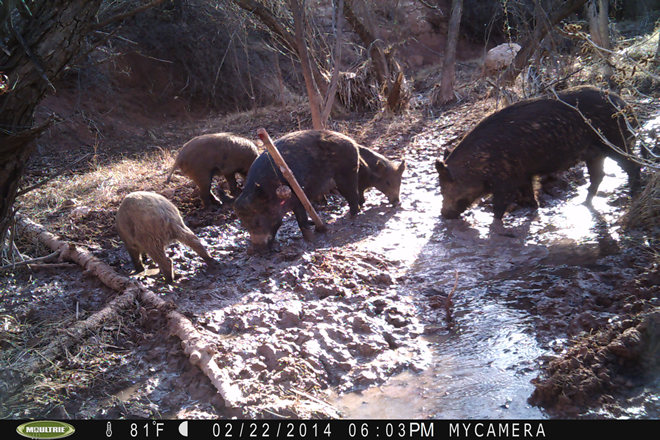
Pigs in daylight2
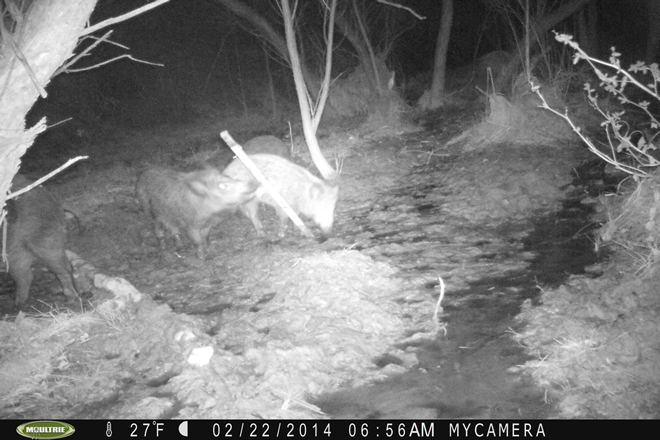
Playing with the pheromone ball2
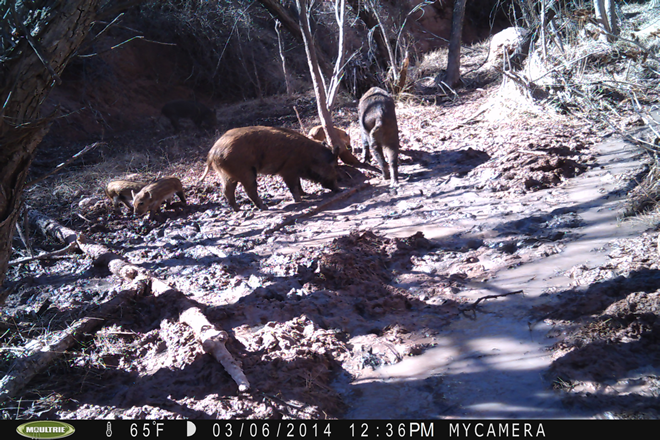
Sow and piglets in daylight

Sows and piglets in daylight
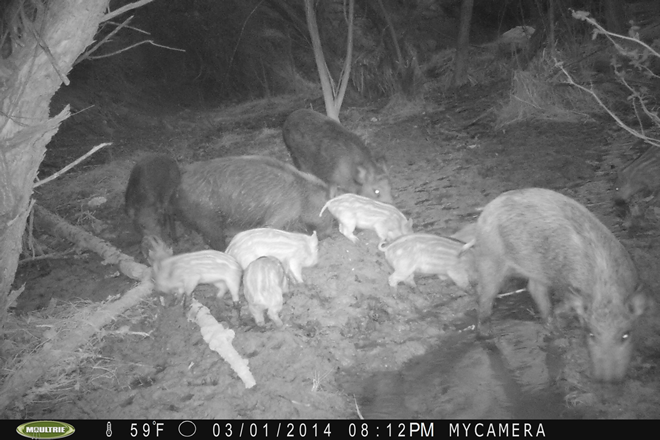
Sows and piglets
Back to topWhat is a Feral Hog?
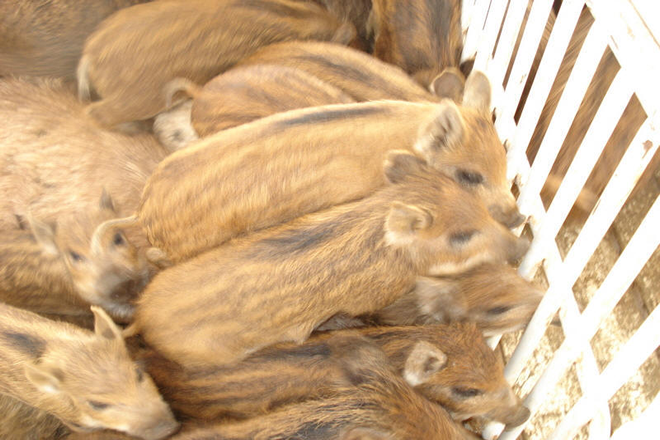
Feral hogs are pigs running wild that originated from both wild pigs released hundreds of years ago and domestic pigs that escaped or were set free – and the interbreeding of the two. Most genes of the feral pigs are wild pig genes from the European Wild Boar (sometimes called the Russian Boar).
We had a research project that studied feral hog physiology and behavior. Highlights of this project are below.
Back to topCollaborators
John McGlone, Professor, Pork Industry Institute, TTU
Dan Hardy, Associate Professor, TTU-HSC
Jerry Smith, Feral Hog Project Manager, TTU
Mark Wallace, Associate Professor Range, Wildlife & Fisheries, TTU
Michael Farmer, Associate Professor, Agricultural and Applied Economics, TTU
Nadege Krebs, Graduate Assistant, TTU
Nathaly Cormier, Graduate Assistant, TTU-HSC
Carl Andersen, Retired Professor, Rancher
Project Objectives
Objectives of the project include the following:
- A review of reproductive technologies that may work, in order of efficacy.
- Indication of research needed to identify the best reproductive control technology.
- Deliver potential pheromone/odor combinations that may be efficacious (or that needs to be developed) that will attract and control populations of Feral Hogs.
Project Executive Summary
This project represents a series of pilot studies that seek to discover methods to catch and control populations of feral hogs in Texas. Two major components of the work include (a) exploration of reproductive technologies that might reduce feral hog fertility and (b) screening pig pheromones and odors that might be used to attract or repel pigs.
After a review of the scientific literature, two immunogen preparations were evaluated as potential reproductive vaccines. These reproductive immunogens were obtained from a pool of many billions of boar sperm cells obtained from more than one thousand commercial pig semen samples. Sperm membranes and membrane rafts were isolated using advanced biochemical purification techniques. The average numbers of piglets born from control sows was 13.0 pigs per litter. Pigs with the membrane reproductive vaccine had 5.7 pigs born (a 56% decrease) while pigs vaccinated with membrane rafts had 3.5 pigs born (a 73.1% decrease). Extremely promising reproductive control technologies were identified as good candidates for efficacious reproductive control.
Food odors and natural pheromones were examined for preference among domestic and feral pigs. In controlled studies, pigs spent significant amounts of time near Chile, Maple Syrup, and Ammonia odors. When Chile odor was placed along feral hog trails, feral hogs were attracted to this odor source. Feral hogs were conditioned to come to a large catch pen where they were trained to consume corn. Extensive still pictures and video were captured to understand the social dynamics of three herds of pigs. Seventy-six feral pigs were caught in 3 trapping expeditions (they were sold as Texas Wild Boar).
Future studies are needed to (a) better understand the biology of the feral hogs, (b) to establish efficacious trapping methods based on the biology of the feral hogs, and (c) refine and test species-specific reproductive control technologies, and in the future (d) begin massive biological control processes.
For more information, contact:
John McGlone, Professor
Jerry Smith, Feral Hog Project Manager
Laboratory of Animal Behavior, Physiology and Welfare
-
Address
1308 Indiana Ave Lubbock, TX 79409-2141 -
Phone
806.834.8275 -
Email
john.mcglone@ttu.edu
